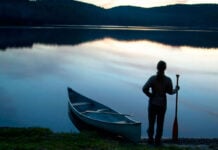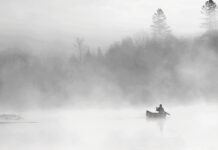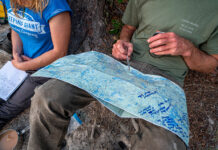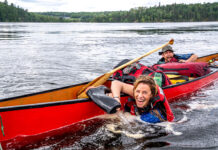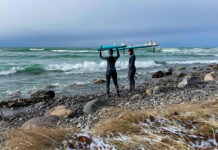If you dream of going to the moon, first try New York City’s Meatpacking District. Last year, an out-of-this-world virtual reality (VR) experience was unleashed in anticipation of the 50-year anniversary of the Apollo 11 mission. Wearing a flight suit, VR headset and gravity-offload harness developed in partnership with NASA to simulate lunar leaping, users experience an immersive and interactive lunar landing. Astronauts say it’s just like the real thing. Living more than 238,000 miles away, it’s the closest most of us will get.
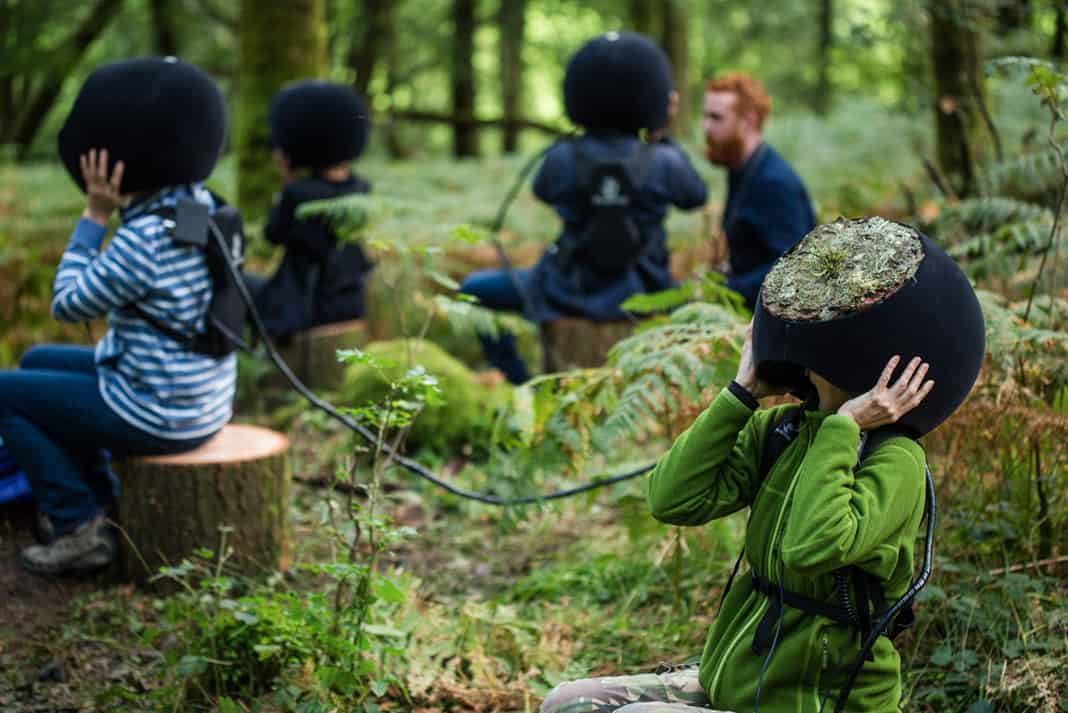
And that’s the idea. The project uses VR “to democratize experiences, events, cultural moments typically reserved for the elite few,” says Samsung’s Zach Overton, which partnered with NASA on the project. While only 12 men have ever walked on the moon, Overton said, “We feel like it should be something everybody can experience.”
Last fall, while creating the annual Paddling Buyer’s Guide, I asked a handful of canoeing industry leaders to pontificate about the future of their passion.
“Ten years from now, I fear multi-day wilderness tripping will be a thing of the past and virtual reality canoe trips will be all the rage,” boldly predicted regular columnist and former director of the Canadian Canoe Museum, James Raffan. Raffan’s prediction nettled me. Is there value in a virtual wilderness experience? Without the prep, bugs, sweat and clean-up, isn’t the experience fundamentally changed? Could this really be the future?
Nah.
And yet, for many of the planet’s three billion urbanites who lack access to wild spaces due to geography, economy and other factors, virtual reality could be the closest they get to wilderness. Those benefits are small but still tangible—we’ve written about the positive effects even a virtual nature “experience” on a smartphone app can have on mood and stress levels.
Visual media is powerful. David Attenborough-narrated nature documentaries made many fall in love with places we have never been. Bill Mason’s films inspired many to pick up a paddle. Could an even more immersive experience make someone genuinely fall in love with canoe tripping and the wilderness?
The whimsically named Marshmallow Laser Feast (MLF) is a London, U.K.-based multimedia design studio taking this idea a step further. They aim to use technology to help people re-connect with nature. Their 2015 installation, “Through the Eyes of the Animal,” used a 360-degree virtual experience to help visitors explore a forest through the eyes of animals and insects. Via haptics, headsets and sound, visitors could fly through the forest as a laser-eyed owl, feel a frog’s ribbit run down their back, and buzz along a carbon dioxide trail as a mosquito.
The company’s 2018 project highlights the invisible connection of humans and plants through breath. With the help of breath and heart sensors monitoring the user in real-time, as well as sound, scents, headsets and wind machines, the 20-minute-long untethered experience explores oxygen exchange inside a forest of giant Sequoia trees. The designers hope it will spark conversation about conservation.
Every day we see apocalyptic headlines heralding the sixth great extinction, polar ice caps melting, and oceanic garbage patches the size of large states. MLF’s artistry taps into our collective sense of wonder about the natural world and uses it to inspire, instead of bleak messaging which discourages so many.
“Our hope is you’ll probably start caring a little more about a mosquito or an owl, or the forest itself,” MLF’s director said in an interview with CNN. Through lightweight AI goggles or an app on a smartphone, “you could understand the language birds are singing, see plants photosynthesizing, or watch oxygen enter your lungs. All things we learn about at a young age. Soon we’ll be able to create a true understanding of the invisible parts of our world.”
It’s just one example of the many ways technology could be used to enhance—instead of erode—our connection to nature. Just like a virtual trip to the moon can expand our awe about the universe, instead of diminishing it. With more than three billion smartphone users around the planet, now is the time for technology to help inspire conversations and solutions for wild places.
Maybe James Raffan is right. Maybe virtual reality canoe trips will be all the rage in the near future. It could be one small step for man, and hopefully a giant leap for us all.
Kaydi Pyette is the editor of Paddling Magazine.
Award-winning virtual reality experience creators, Marshmallow Laser Feast uses technology to help repair connections with nature. Photo: Courtesy Marshmallow Laser Feast



